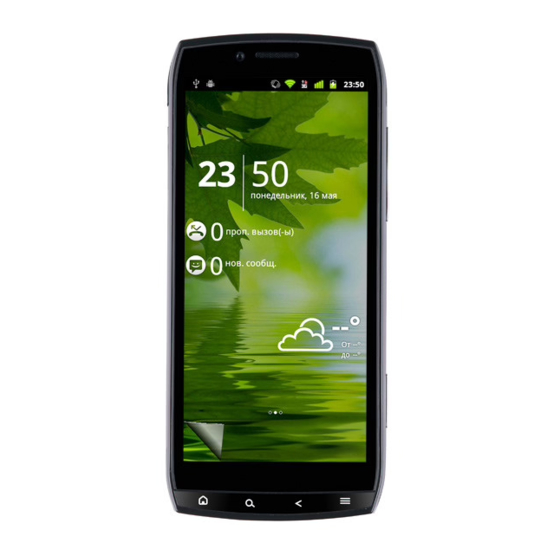Acer JMS300 매뉴얼 - 페이지 32
{카테고리_이름} Acer JMS300에 대한 매뉴얼을 온라인으로 검색하거나 PDF를 다운로드하세요. Acer JMS300 37 페이지.

RF exposure information (SAR)
This mobile phone meets the government's requirements for exposure to radio waves.
This phone is designed and manufactured not to exceed the emission limits for exposure
to radio frequency (RF) energy set by the Federal Communications Commission of the U.S.
Government.
The exposure standard for wireless mobile phones employs a unit of measurement known
as the Specific Absorption Rate, or SAR. The SAR limit set by the FCC is 1.6 W/kg.
Tests for SAR are conducted using standard operating positions accepted by the FCC with
the phone transmitting at its highest certified power level in all tested frequency bands.
Although the SAR is determined at the highest certified power level, the actual SAR level
of the phone while operating can be well below the maximum value. This is because the
phone is designed to operate at multiple power levels so as to use only the poser required
to reach the network. In general, the closer you are to a wireless base station antenna,
the lower the power output.
The highest SAR value for US model phones as reported to the FCC when tested for use at the
ear is 0.355 W/kg and when worn on the body, as described in this user guide, is 0.856 W/kg.
Important: Body-worn measurements differ among phone models, depending upon
available enhancements and FCC requirements.
While there may be differences between the SAR levels of various phones and at various
positions, they all meet the government requirements.
The FCC has granted an Equipment Authorization for this model phone with all reported
SAR levels evaluated as in compliance with the FCC RF exposure guidelines. SAR
information on this model phone is on file with the FCC and can be found under the
Display Grant section of www.fcc.gov/oet/ea/fccid after searching on
FCC ID: HLZJMS300 (for US models).
For body worn operation, this phone has been tested and meets the FCC RF exposure
guidelines for use with accessories that contain no metal and that position the handset a
minimum of 1 cm from the body. Use of other accessories may not ensure compliance
with FCC RF exposure guidelines. If you do not use a body-worn accessory and are not
holding the phone at the ear, position the handset a minimum of 1 cm from your body
when the phone is switched on.
Using your phone with a hearing aid device (US models)
Your device is compliant with the FCC Hearing Aid Compatibility (HAC) requirements.
When some wireless phones are used near some hearing devices (hearing aids and
cochlear implants) users may detect a buzzing, humming, or whining noise. Some hearing
devices are more immune than others to this interference noise, and phones also vary in
the amount of interference they generate. The wireless telephone industry has developed
ratings for some of their mobile phones, to assist hearing-device users in finding phones
that may be compatible with their hearing devices. Not all phones have been rated.
Phones that have been rated have a label on the box. Your device has been tested for
hearing aid device compatibility and has an M4 rating.
These ratings are not guarantees. Results will vary, depending on the level of immunity of
your hearing device and the degree of your hearing loss. If your hearing device happens
to be vulnerable to interference, you may not be able to use a rated phone successfully.
68
